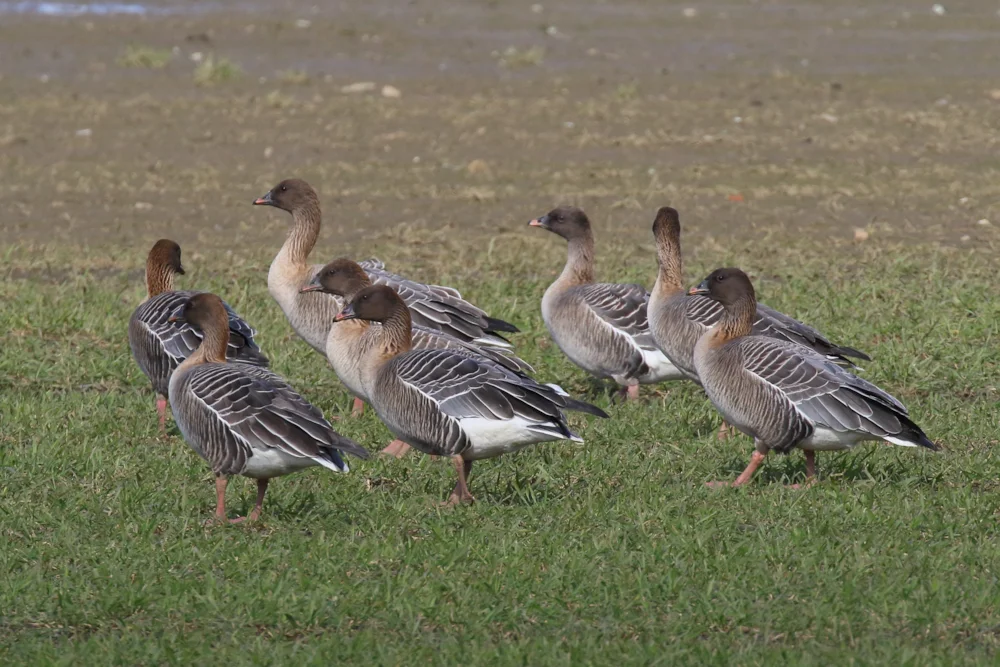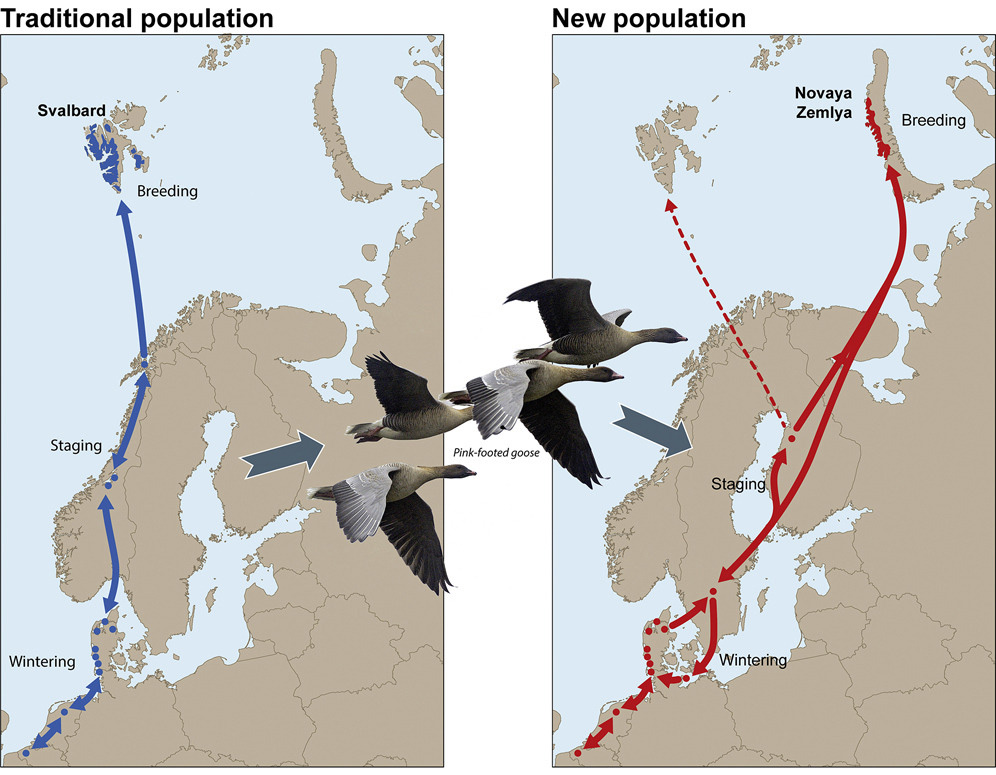A new study has documented the rapid formation of a new population of Pink-footed Goose breeding in Arctic Russia.
In only a decade, Pink-footed Geese have formed a new migration route and disjunct breeding population in Novaya Zemlya, an archipelago in northern Russia situated some 1,000 km east of the original breeding grounds in Svalbard.
In that short time, the population has grown to 3,000-4,000 birds, explained by intrinsic growth and continued immigration from the original route. The team behind the study also suggests that the social behaviour of geese, resulting in cultural transmission of migration behaviour among individuals of the same species as well as in mixed-species flocks, is key to such a fast development.

The study documents a newly formed breeding population of Pink-footed Goose in Arctic Russia, as well as its migration route and wintering grounds (Alan Jack).
The Svalbard population of Pink-footed Goose migrates via a narrow corridor to staging sites in Norway and onward to wintering grounds in western Denmark, The Netherlands and Belgium. Abundance increased from around 45,000 individuals in 1990 to a level fluctuating around 80,000 since 2010.
In the 1990s, Pink-footed Geese were reported in small groups among Taiga Bean Geese in southern Sweden during spring and autumn, and in western Finland during spring. Since the early 2000s, observations of Pink-footed Goose flocks have become more regular and numbers have increased in both countries.
In the springs of 2018 and 2019, the team tagged 21 Pink-footed Geese with GPS transmitters near Oulu, Finland, with 19 of these subsequently returning data about their onward migrations. Nine of these migrated to Svalbard, while 10 migrated to Novaya Zemlya.

Graph depicting (left) the traditional migration route of Svalbard Pink-footed Geese and (right) the route of birds migrating to the recently formed colony in Novaya Zemlya.
The colonisation, researchers say, has been made possible by recent climatic warming in Novaya Zemlya and provides evidence of migratory birds adapting to a warming world.
The team wrote: "While many Arctic-breeding migratory animals are threatened by global warming and other human-induced pressures, evidence for changes in migratory behaviour that may buffer detrimental impacts is accumulating.
"Here we report on a spectacular example of a species that has both rapidly colonised a new breeding area far away from its traditional range and established a totally new migratory route, including new staging and wintering sites."
The full paper is open-access and can be read online here.
Reference
Madsen, J, Schreven, K H T, Jensen, G H, Johnson, F A, Nilsson, L, Nolet, B A, & Pessa, J. 2023. Rapid formation of new migration route and breeding area by Arctic geese. Current Biology. DOI: https://doi.org/10.1016/j.cub.2023.01.065

